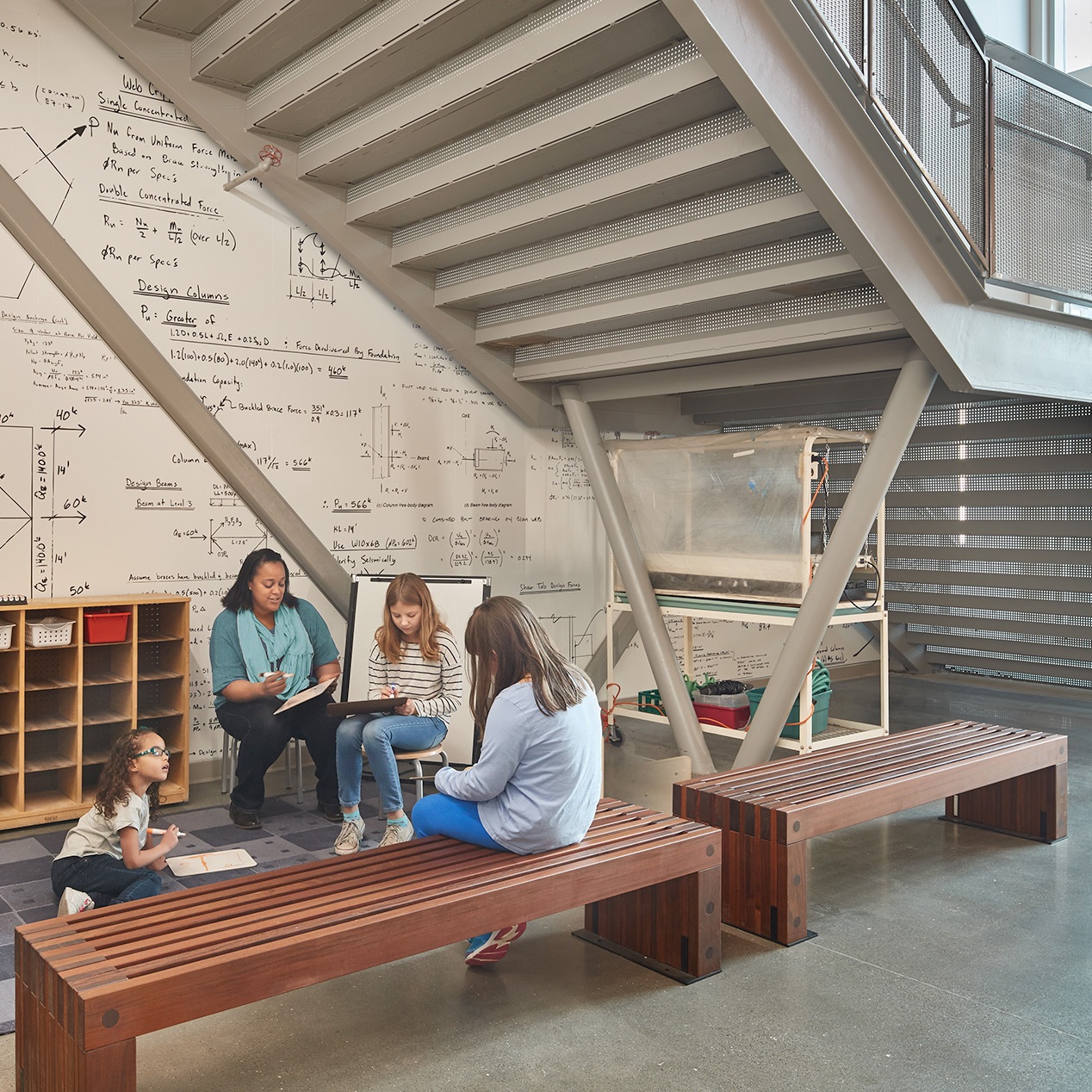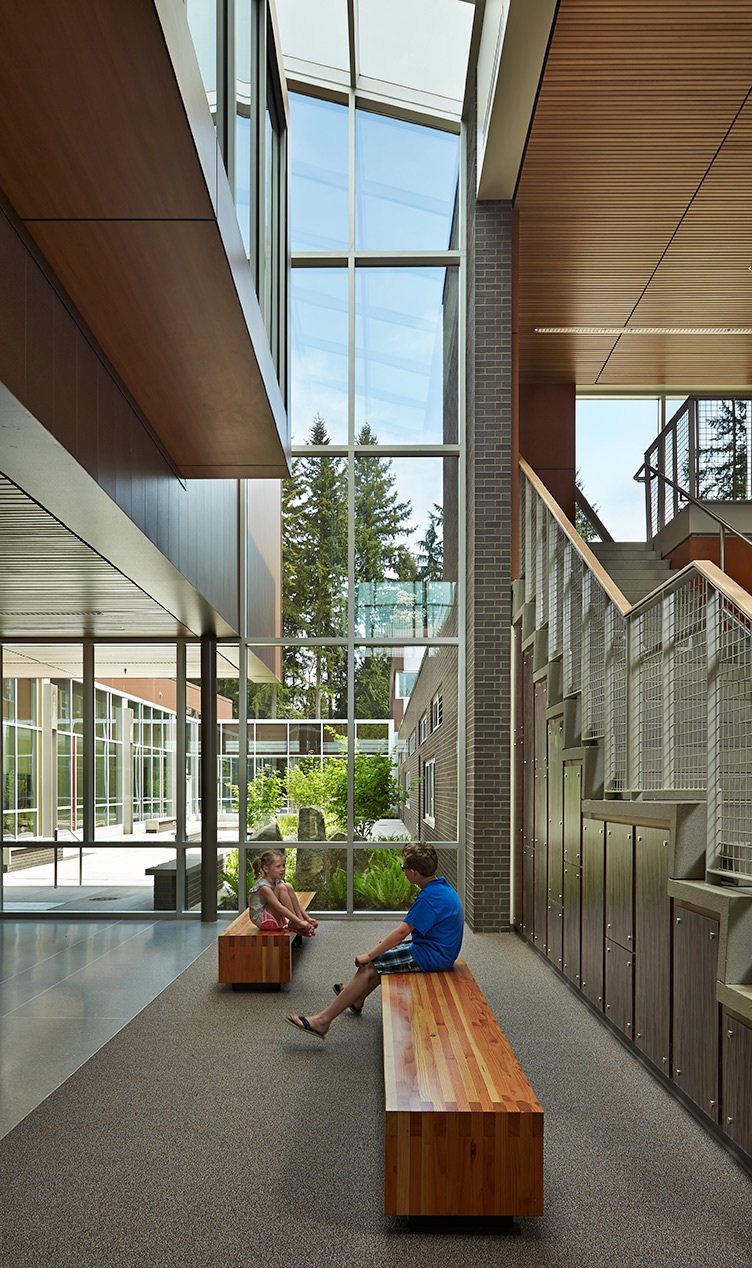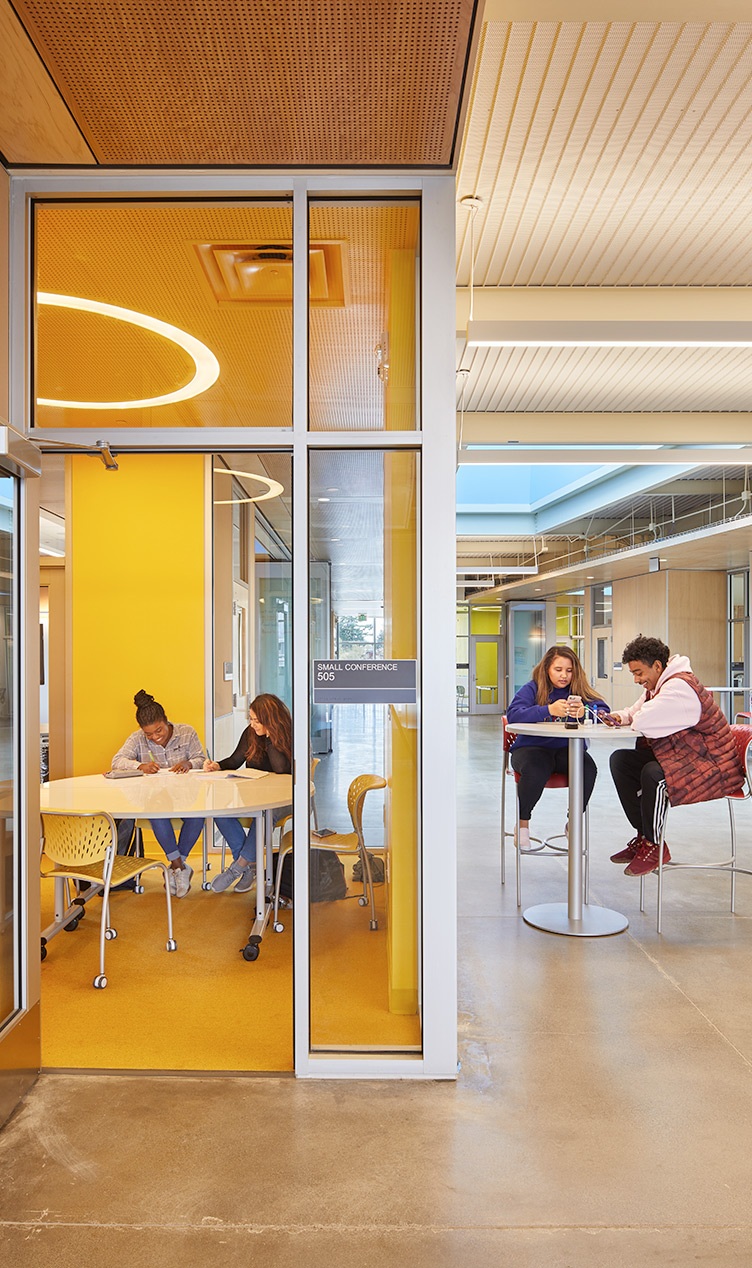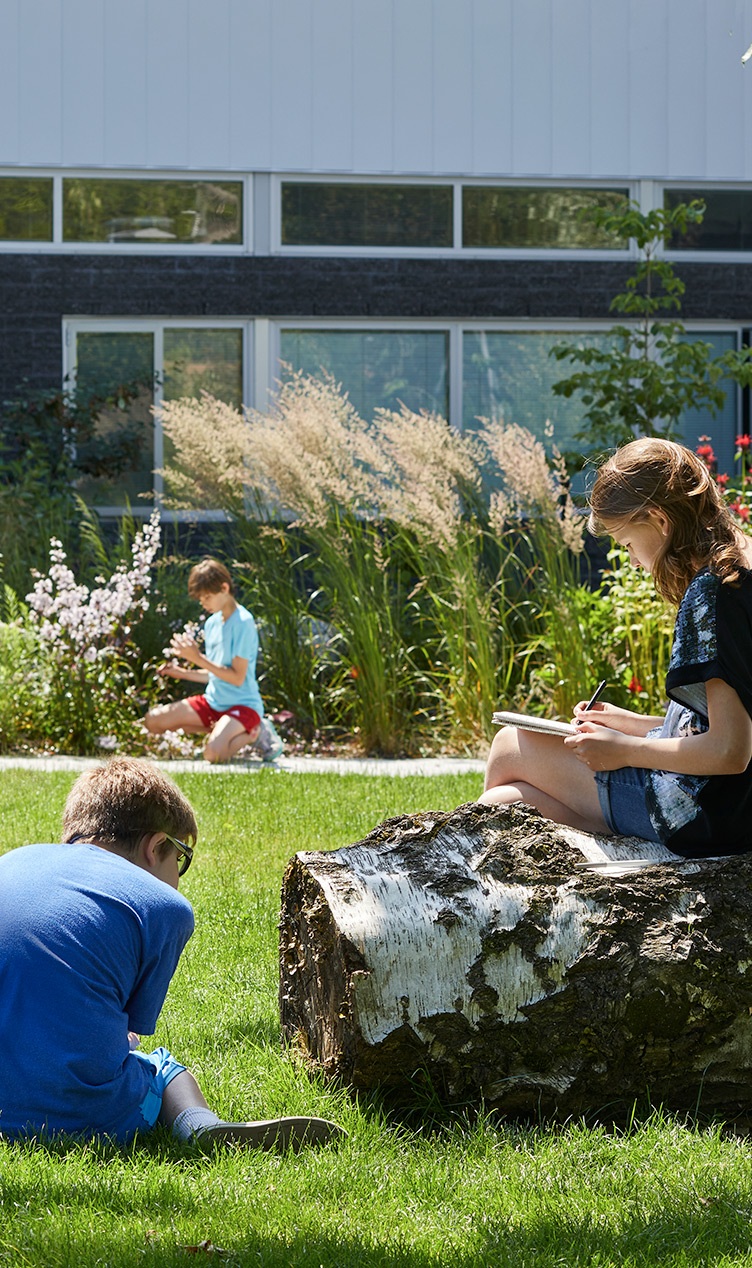An Introvert’s Oasis: How to Create Learning Environments for All Student Types
Put yourself in a student’s shoes. What does your day look like? Maybe you begin by having your personal bubble invaded on a noisy bus. When you get to school, you step into a crowded hallway full of your peers. After some small talk and catching up on what happened in the whole 12 hours since you’ve last seen your friends, the bell eventually rings and the real day begins. In one class you’re forced to work on a group project where you can’t get a word in edgewise over the boisterous self-appointed leader. In the next, to your horror, you are called up to the board to work out a problem in front of your peers before you’ve had a chance to work it out on your own.
At lunch you’re confined in the cafeteria at long tables with continuous benches, which force you to sit and interact with others. If you’re younger, you may get to enjoy recess outside, but you’re encouraged to be active with your friends; this is not the time to rest and recharge. Back to class you go for more group work and maybe a lecture or two before the day wraps up. Then the morning plays out in reverse; back through the noisy halls and onto the bus that will take you home at last.
Think about how much stimulation and social interaction was packed into that seven-hour day. If this sounds familiar to you, you might identify as an introvert and you can likely relate to feeling exhausted after a typical school day. But maybe you read that and are thoroughly confused. What’s wrong with crowded spaces, small talk, and group work? That stuff is awesome! Well… hello, extrovert!
What Is An Introvert?
In order to understand why a school day can be so grueling for an introverted student, it’s important to know what it means to be introverted. First, it’s critical to recognize that introversion-extroversion is a spectrum and each individual lies somewhere between the two extremes; meaning most people share both introverted and extroverted qualities. In simplest terms, being an introvert means that being in social situations takes energy away from a person and time alone is required to recharge their battery. On the other end of the spectrum, extroverts are energized by these interactions and seek them out to keep their battery fully charged.
There are many misconceptions about introverts that paint them as shy, quiet, and antisocial. While this may be true for some, for many this is simply not the case.
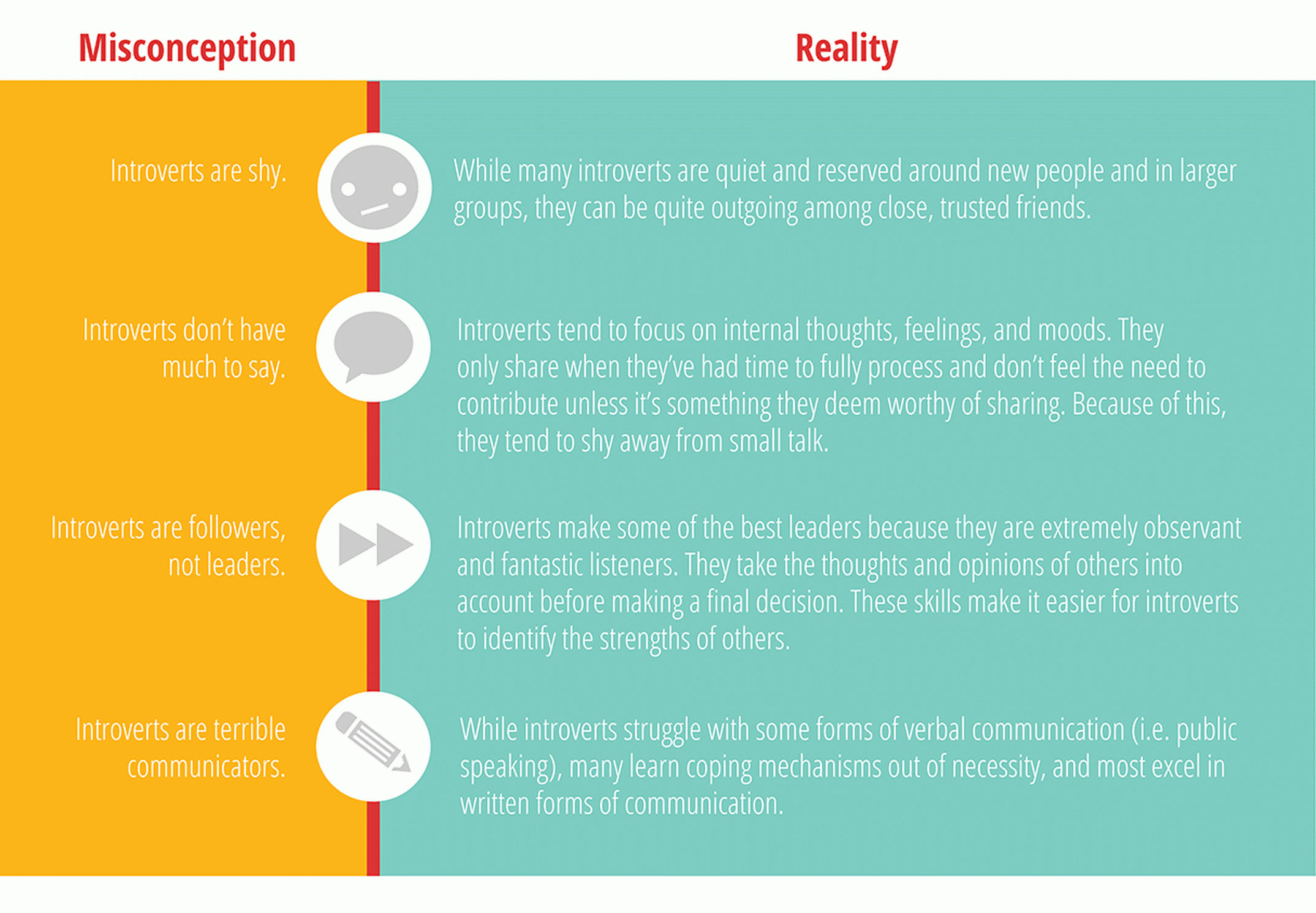
Student Challenges
Taking all of these things into consideration, imagine the unique challenges that introverted students face in a traditional classroom setting. In an education climate shifting more and more towards group work, it becomes even more critical to find ways for introverted students to contribute in a collaborative setting where they may be overshadowed by more extroverted students. Because introverts tend to think things through internally, these students require uninterrupted time alone to process information and form opinions before being able to effectively discuss or share with the larger group. And since many introverts struggle with public speaking, the process of sharing these opinions can be particularly challenging when they are not given the opportunity to communicate ideas using other formats.
Outside of group work and presenting, a traditional school setting is not well-suited to accommodate the time and space that an introverted student needs to recharge when feeling overstimulated by the constant social interaction and strict schedule a school day follows. Establishing areas either within or adjacent to a learning space gives students a safe place of respite during a regular class period; using transparent materials provides teachers the visibility needed to still monitor these spaces for safety.
How Can We Help?
CLASSROOMS
One of the simplest ways to effect change in a classroom setting is through the selection of the appropriate furniture. In order to allow for maximum flexibility, the ideal setup would contain an assortment of different types of easily mobile seating options. This could include everything from a mixture of standard and cafe height student desks and chairs to an assortment of lounge seating that may include sofas, lounge chairs, ottomans, and even bean bags. A configuration like this accommodates different sized groups, as well as individual work, and can easily be reworked into a variety of layouts to create activity zones that suit a multitude of teaching and learning styles.
Below are some examples of how to maximize the use of mobile seating to meet a wide range of student needs.
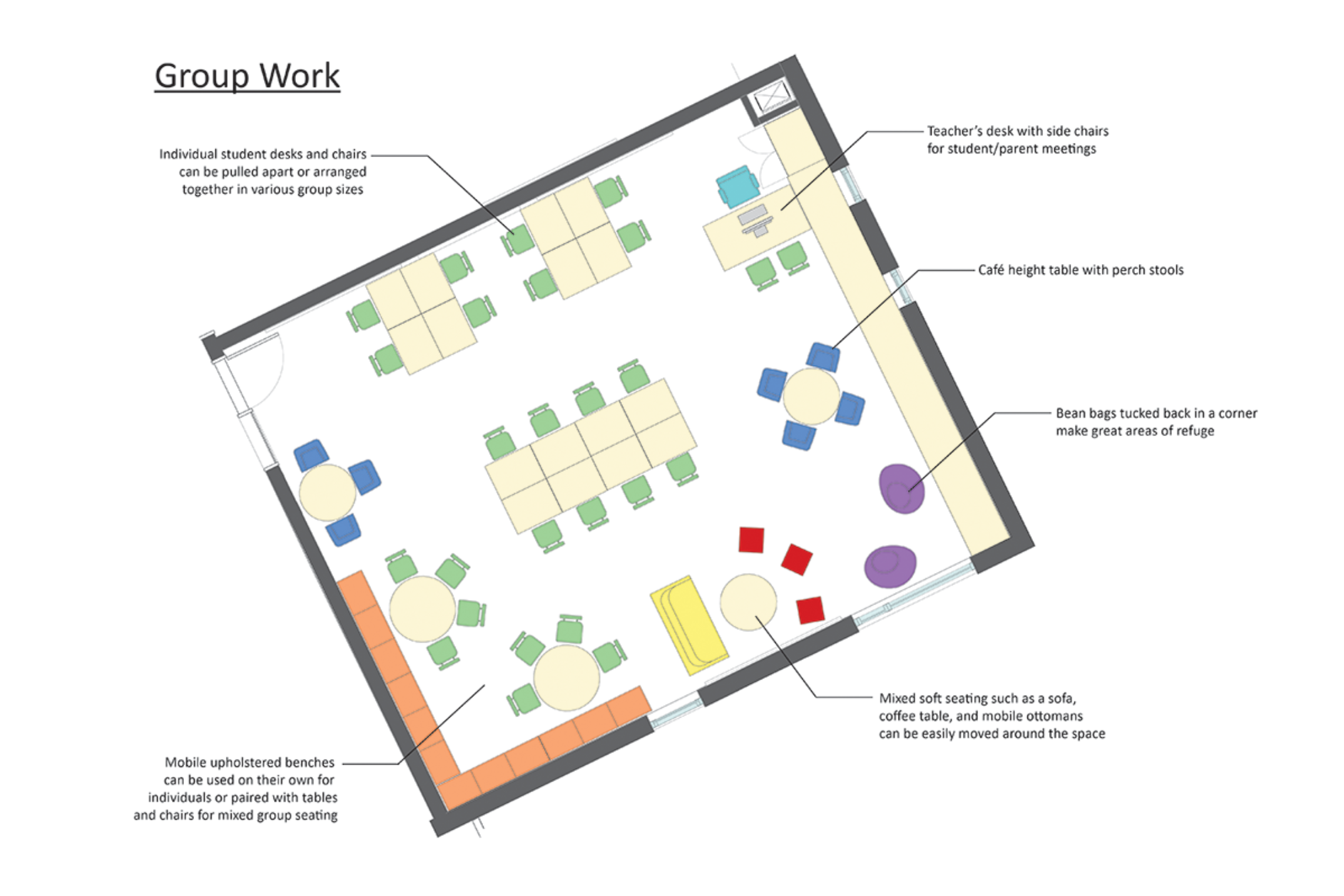
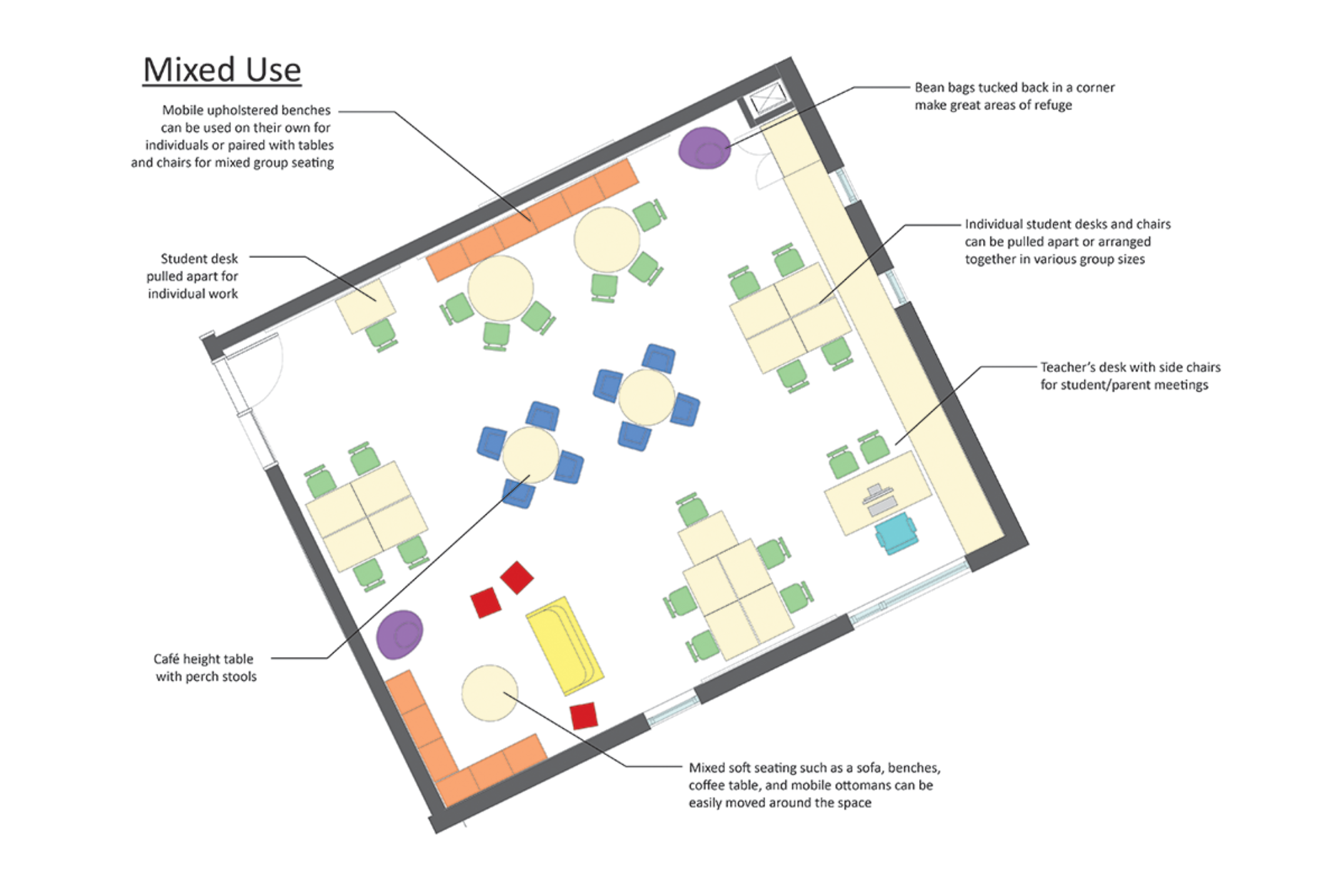
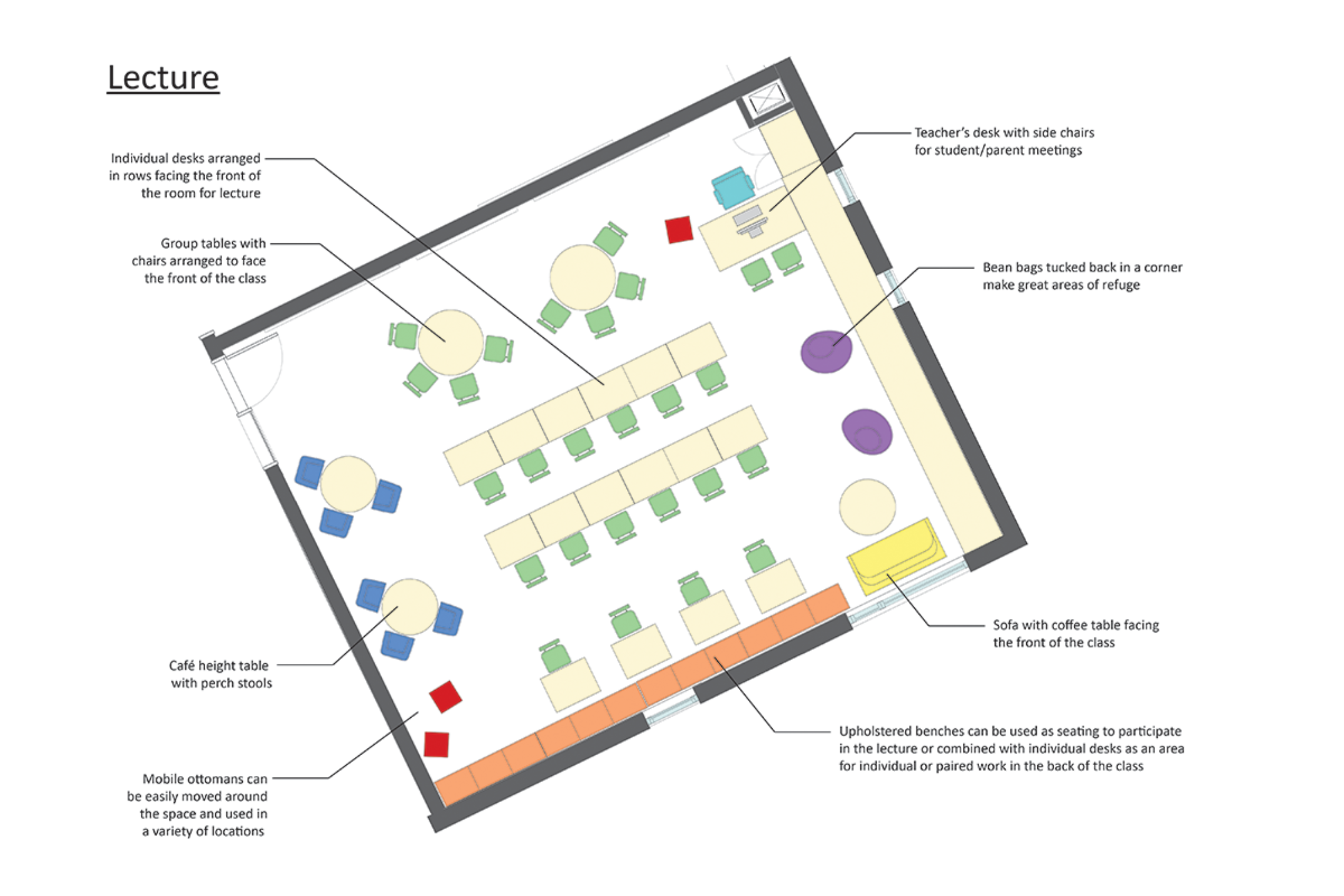
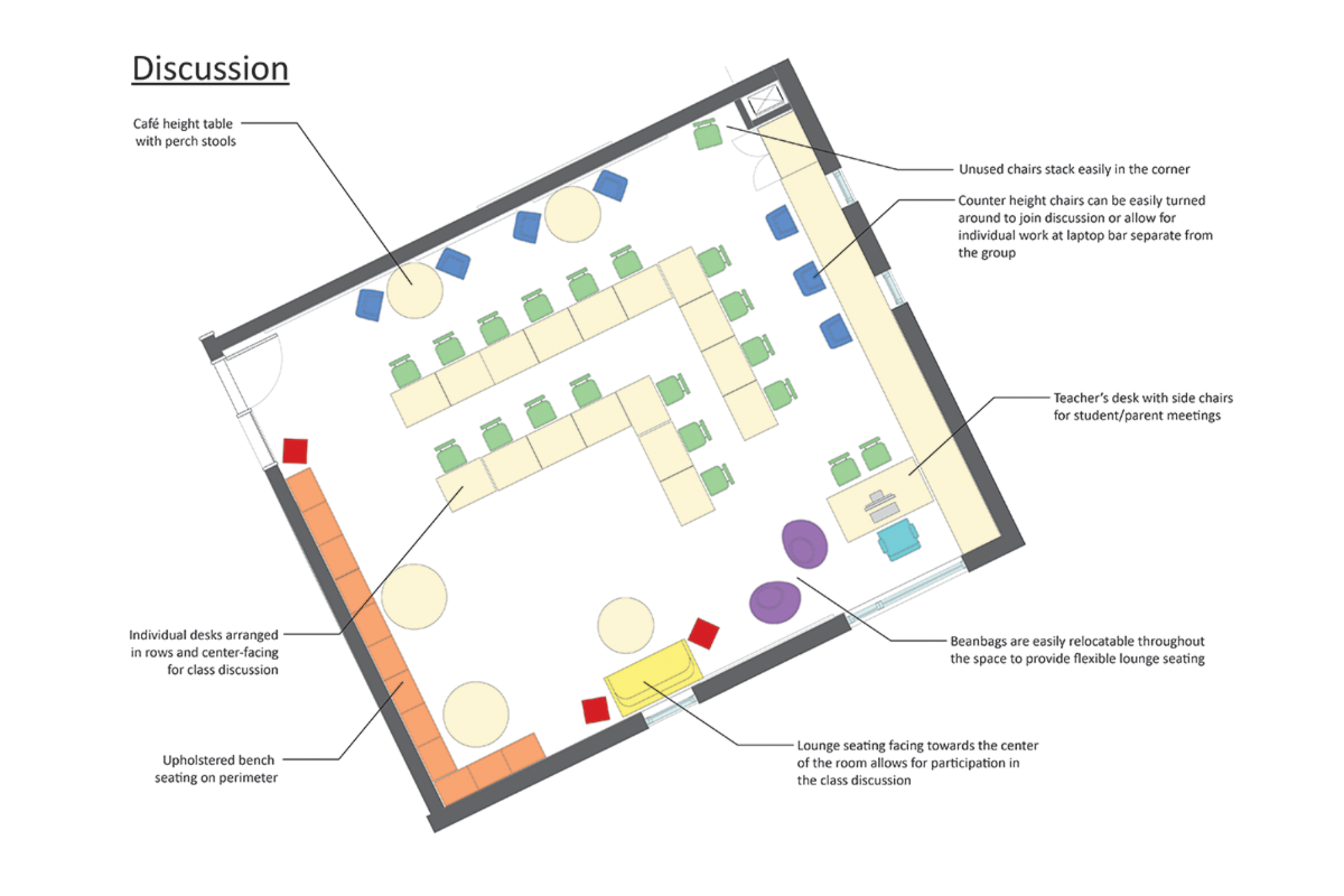
In order to create a sense of security where all students can feel free to contribute to the class in a way that is more comfortable for them, flip-top tables with writable surfaces make a great addition to the classroom. They allow students to mull over a problem alone or in pairs before sharing their responses with the rest of the class, all from the comfort of their own seat.
Another way to achieve this feeling of security is through the use of technology paired with polling software. Programs like Presentain, Poll Everywhere, and Mentimeter have live polling features that display questions on the main screen at the front of the class and allow for each student to contribute anonymously without being called on or having to raise their hand. This gives kids that would typically not participate a way to share their ideas more freely.
CIRCULATION/SHARED SPACES
While these spaces often require planning ahead of construction, incorporating such spaces into a school helps create additional areas of refuge for rest and recharge, as well as secondary teaching spaces outside of the classroom.
Small group rooms, benches off the main path of circulation, and nooks/crannies located throughout hallways, classrooms, and libraries provide additional areas for students to rest and recharge.
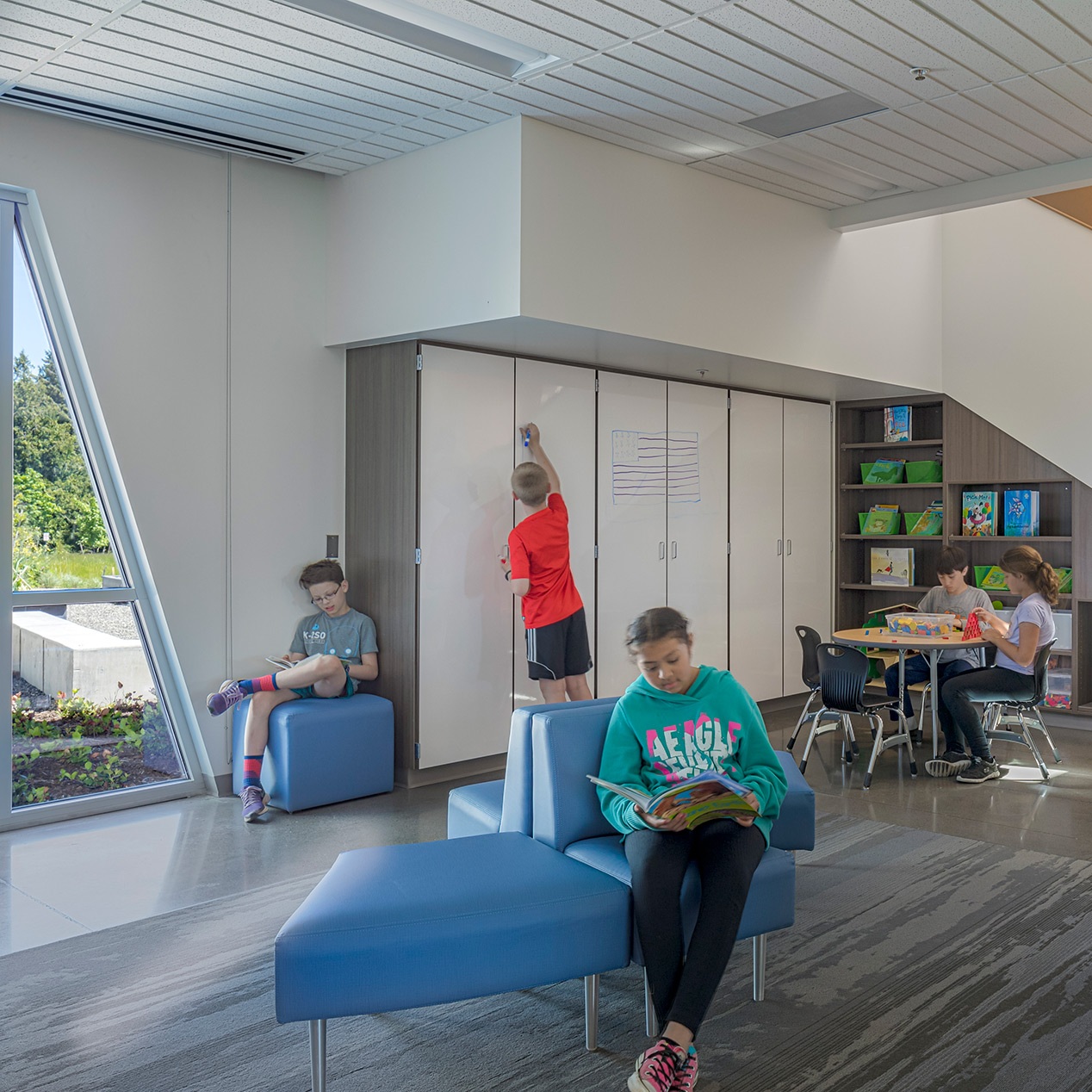
Happy Valley Elementary School
CAFETERIA
Lunch time is one of the only occasions where a student has scheduled downtime in the school day, but a typical cafeteria does not accommodate introverts using this time to seek refuge and relax. Most cafeterias are filled with banks of large group tables and accompanying rows of benches.
Instead, cafeterias should be broken up into varying zones that differ in both activity and noise levels, as well as table heights and sizes. Centrally-located tables should accommodate larger groups and signify a more active zone, while tables pushed towards the outer rim of the cafeteria should consist of two- to four-person tables and booths that signify a quieter zone for students who need to use this time to recharge from the first half of the day.
While it's helpful to have these zones set up inside, an additional zone should be created outdoors. This offers students a connection to nature, which has a relaxing effect and can further aid in recharge time.
CONNECTION TO SITE
This calming link to nature can be further capitalized on by creating spaces outside the building that can be used for teaching as well as relaxation and reflection. A combination of quiet courtyards with benches, walking paths, and grassy areas under the shade of trees can provide respite for an overwhelmed student or teacher. Likewise, the opportunities that school gardens provide for students to get their hands in the dirt and observe nature can simultaneously be therapeutic and provide a fantastic teaching opportunity.
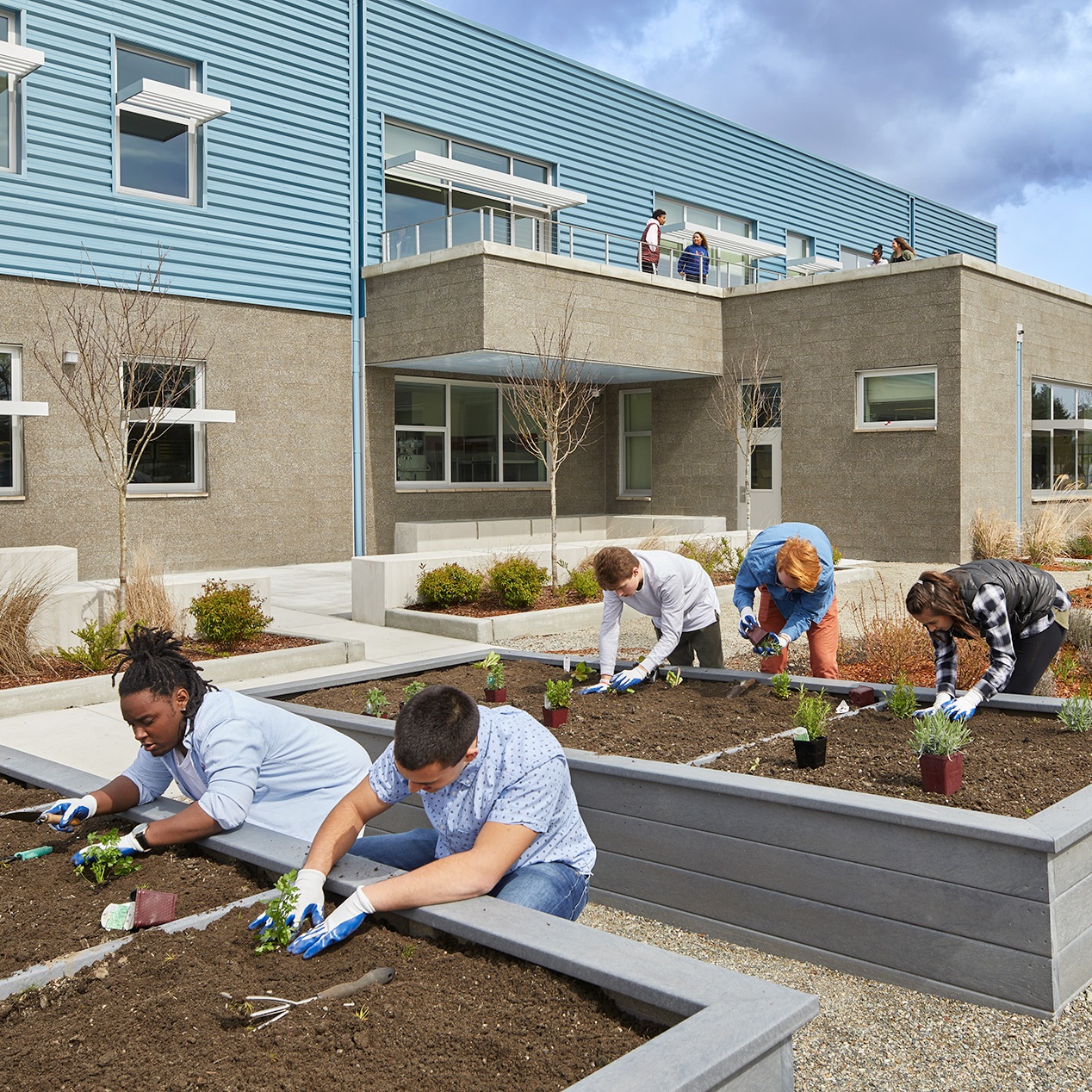
Carefully planned site features that provide space for quiet reflection and relaxation can also double as outdoor learning opportunities. Wilson High School
What are we waiting for?
Schools that are designed to cater mostly to extroverts are ignoring approximately half of the population, and asking these introverts to change who they are in order to fit into the image of the ideal student. It is important that we respect and support students’ differences and various learning styles. Simple changes to furniture, the addition of some key secondary spaces, the integration of technology, and a connection to nature can help to create built environments that set ALL students up for success and allow them to be their best selves.
Interested in learning more?
- Cain, Susan. (2012) Quiet :the power of introverts in a world that can't stop talking, New York: Crown Publishers
- TED talk: "The power of introverts," Susan Cain
- nprEd: "How Parents And Teachers Can Nurture The 'Quiet Power' Of Introverts"
- Steelcase: "The Quiet Ones"
- archdaily.com: "In Defense of Introverts"
We would love to hear your thoughts! Send us an email: NACLab@nacarchitecture.com

